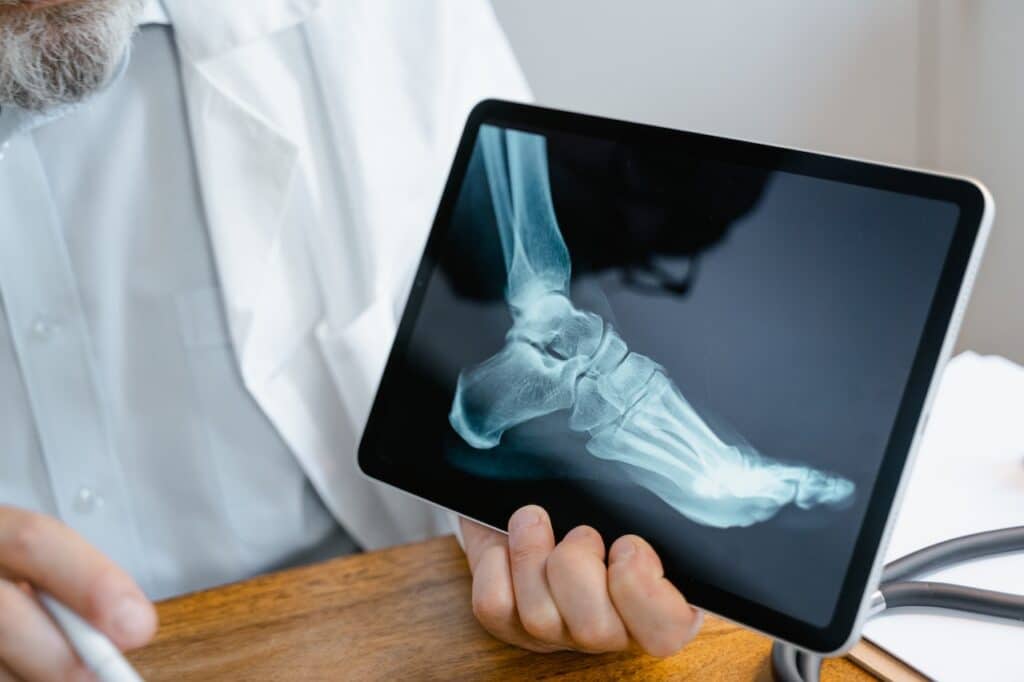If you need a zero footprint DICOM viewer, please contact us at info@zlynger.com
From the bustling emergency room to the quiet radiology department, physicians are constantly faced with the challenge of reviewing and analyzing a vast number of medical images.
With advancements in technology, software vendors have developed innovative solutions to streamline the process and enhance efficiency.
One such solution is the zero footprint DICOM image viewer.
In this article, we will explore what exactly a zero footprint DICOM image viewer is and how it is revolutionizing the field of medical imaging.
What is a Zero Footprint DICOM Image Viewer?
A zero footprint DICOM image viewer is a cloud-based software tool that enables instant access to patient medical images and information across multiple platforms, without the need for installing additional software or plugins on local machines.
It is designed to be device, browser, and operating system-agnostic, allowing healthcare providers to access and view patient imaging data simply by opening a web browser and logging in.
Unlike traditional PACS viewers, which require maintenance on local devices, zero footprint DICOM image viewers offer the flexibility to access images from any device, be it a mobile phone, tablet, laptop, or desktop computer.
This means that radiologists can securely review diagnostic-quality images and make informed decisions from a laptop, even if they are not physically present in the hospital.
Additionally, supporting staff can access the medical imaging information, enabling seamless collaboration and comprehensive patient care.
Key Features of Zero Footprint DICOM Image Viewers
Zero footprint DICOM image viewers come equipped with a range of features that enhance the user experience and improve workflow efficiency.
Let’s explore some of the key features that make these viewers very useful in the medical field [1]:
Universal Access
Immediate access to medical images is crucial for timely decision-making in patient care.
A scalable zero footprint DICOM viewer solution, integrated with picture archiving and communication systems (PACS), vendor-neutral archives (VNAs), and electronic medical record (EMR) systems, provides physicians with universal access to stored images, regardless of their location.
This ensures that critical information is readily available, no matter where the physician is located.
Convenient Technology
Zero footprint DICOM image viewers streamline healthcare processes.
These viewers ensure that caregivers can view images even on slower Internet connections.
There is no need for additional plugins or modules, making the viewing experience seamless and hassle-free.
Moreover, zero footprint viewers offer a wide range of tools, such as multi-monitor support and 3D reconstructions, catering to the diverse needs of clinicians.
Access Anywhere, Anytime
With the advancements in technology, physicians are no longer bound to a specific location to review medical images.
Zero footprint DICOM image viewers enable physicians to access images from any location, as long as they have an Internet connection.
Whether they are at the hospital, in their office, or even on the go, physicians can securely access and review medical images, promoting efficient collaboration and informed decision-making.
Security
In a healthcare setting, maintaining the security and privacy of patient information is of utmost importance.
Zero footprint DICOM image viewers address this concern by offering a “zero-trace” solution.
This means that the viewer software does not store any patient information on users’ devices.
Once the user closes the web browser or logs off, sensitive patient information becomes inaccessible, ensuring compliance with privacy regulations and safeguarding patient data.
Collaboration
Collaboration among healthcare professionals is essential for comprehensive patient care.
Zero footprint DICOM image viewers facilitate real-time remote consultations, allowing simultaneous viewing and collaboration by multiple specialty departments, including cardiology, oncology, orthopedics, neurology, and surgery.
Referring clinicians can also actively participate in discussions, leading to better diagnostic accuracy and treatment planning.
The Advantages of Zero Footprint DICOM Image Viewers
Zero footprint DICOM image viewers offer numerous advantages that significantly impact the field of medical imaging and patient care.
Let’s delve into some of these advantages:
Enhanced Mobility and Flexibility
With zero footprint DICOM image viewers, physicians are no longer tied to their workstations or limited by the capabilities of specific devices.
The cloud-based nature of these viewers allows physicians to access medical images from any Internet-connected device, empowering them to provide quality care on the go.
This enhanced mobility and flexibility not only improve efficiency but also contribute to better patient outcomes.
Streamlined Workflow
By eliminating the need for additional software installations or plugins, zero footprint DICOM image viewers simplify the workflow for physicians and other healthcare professionals.
The ability to access medical images seamlessly through a web browser saves valuable time and reduces administrative burdens.
Physicians can focus on making informed decisions rather than navigating complex software interfaces, leading to increased productivity and improved patient care.
Cost Savings and Scalability
Implementing traditional PACS viewers can be costly, requiring significant investments in hardware, software, and maintenance.
In contrast, zero footprint DICOM image viewers operate on a cloud-based infrastructure, eliminating the need for expensive on-site equipment.
This not only reduces initial costs but also allows for scalability, as additional storage and computing power can be easily provisioned as the need arises.
Healthcare facilities can optimize their resources and invest in other critical areas, all while benefiting from a robust and efficient imaging solution.
Seamless Integration with Existing Systems
Compatibility with existing systems is crucial when implementing new technology in healthcare settings.
Zero footprint DICOM image viewers are designed to seamlessly integrate with various systems, including PACS, VNAs, EMRs, and EHRs.
This integration ensures that medical images and patient data are readily accessible within the existing infrastructure, minimizing disruption and maximizing efficiency.
Physicians can retrieve and review images without the hassle of logging into multiple systems, ultimately improving workflow and patient care coordination.
The Future of Medical Imaging
As technology continues to advance, the future of medical imaging looks promising with the widespread adoption of zero footprint DICOM image viewers.
These viewers have already revolutionized the way medical professionals access, review, and collaborate on medical images, leading to improved patient care and outcomes.
With their universal access, speed, security, and seamless integration capabilities, zero footprint DICOM image viewers are poised to become an essential tool in the healthcare industry, empowering physicians to deliver efficient, accurate, and personalized care to their patients.
Conclusion
Zero footprint DICOM image viewers have transformed the landscape of medical imaging by providing physicians with universal access to medical images, enhancing mobility and flexibility, streamlining workflows, and ensuring high-level security.
With their numerous advantages and promising future, these viewers are revolutionizing the way healthcare specialists approach medical imaging.
As technology continues to evolve, we can expect further advancements in zero footprint DICOM image viewers, ultimately leading to better patient care and outcomes.
If you need a zero footprint DICOM viewer, please contact us at info@zlynger.com
References:



